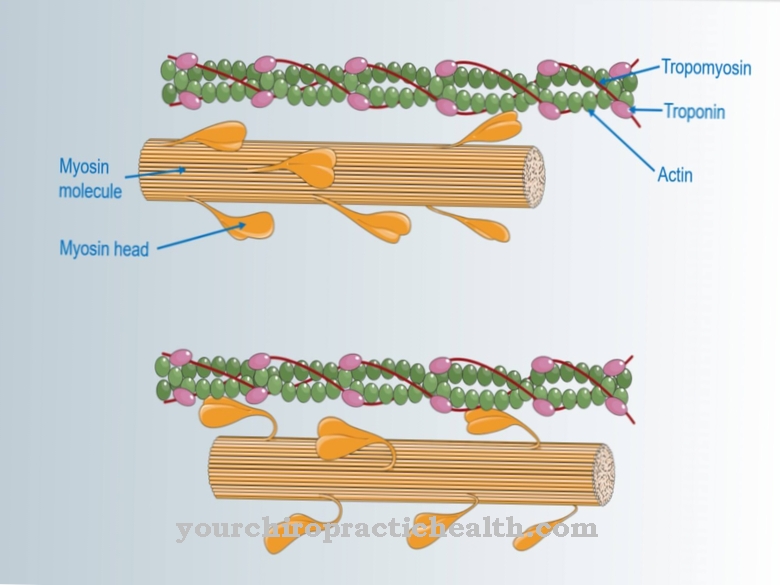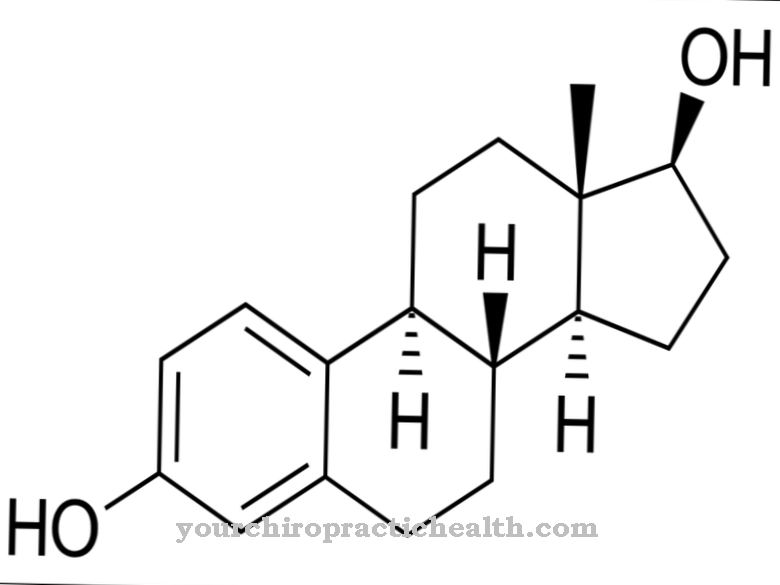Lipases form a group of water-soluble enzymes that contribute to the breakdown of fats in the catabolic metabolism.
The main group of lipases, pancreatic and phospholipases catabolize lipids such. B. tri- and diglycerides and cholesterol esters by catalytically splitting off simple fatty acids and glycerol. The substances are further metabolized by the body or used as basic substances for anabolic purposes.
What are lipases
Originally only the fat-splitting enzymes formed in the pancreas were included in the group of lipases. In a broader sense, lipases, which are formed in the salivary glands of the tongue and in the stomach, as well as phospholipases and lipoprotein lipases also belong to enzyme group III (hydrolases) according to the international classification.
The common feature of all lipases is that they do not need any coenzymes for their bioactivity. As a rule, lipases are secreted by exocrine glands such as the pancreas, salivary glands of the tongue and, to a lesser extent, by the lining of the stomach. This means that the lipases are bioactive extracellularly in the oral cavity, stomach and small intestine.
But there are also lipases that work intracellularly. So that the cell cannot be attacked by the intracellular lipase, it is located in cell organelles, the lysosomes, which are enclosed by special membranes. Lysosomes are roughly comparable to vesicles, which contain substances that have to be transported to certain locations in the cell, but are not soluble in the aqueous cytosol.
Function, effect & tasks
The two main tasks and functions of lipases are, on the one hand, to break down fats contained in food so that they can be absorbed by the intestinal mucous membrane of the small intestine and, on the other hand, to catabolize the body's own fat reserves, if necessary, in such a way that the energy released in the process is available to the body.
The preparation of the catabolization of dietary fats begins in the mouth with the tongue lipases and continues in the stomach under the action of the gastric lipase secreted by certain cells of the gastric mucosa. The main work of processing the fats for absorption by the enterocytes of the intestinal mucosa is performed by the pancreatic and phospholipases, the phospholipases also being produced by exocrine pancreatic cells and conducted into the small intestine. While pancreatic lipase mainly splits off fatty acids and splits triglycerides into monoglycerides, phospholipase primarily supports and catalyzes the hydrolysis of phospholipids.
Lipoprotein lipases play an important role in the fat metabolism of the body's own fats. They break down lipoproteins such as B. on the under general suspicion of LDL and ensures the incorporation of the released fatty acids into the fatty tissue. A high activity of lipoprotein lipases can indeed lower the LDL content of cholesterol, but this happens at the price of a further increase in adipose tissue. Hormone-sensitive lipase (HSL) plays a special role. It also intervenes in the body's internal fat metabolism and, by breaking down the body's own fats, creates basic substances from which all steroid hormones are synthesized, such as the glucocorticoid cortisol, the sex-specific androgens and estrogens, the mineral corticoid aldosterone and many others.
Education, occurrence, properties & optimal values
The lipases are usually synthesized by exocrine gland cells in the salivary glands below the tongue, in the gastric cells of the gastric mucosa and in specialized cells of the pancreas. Lipases can also be found inside the cells as lysosomal lipases in cell inclusions, the lysosomes. The greatest accumulation of lipases can therefore be found in the digestive tract, especially in the duodenum.
Pancreatic lipase is also found in the blood serum and can be measured in the laboratory. The reference values for healthy women and men are between about 13 and 60 units per liter (U / l). It should be noted that the reference values are subject to strong fluctuations depending on the laboratory method used and depending on the time of day and season. Elevated values can indicate pancreatitis, inflammation of the pancreas, or impairment of kidney function if the deviations cannot be explained otherwise.
The catalytic effect of the lipases is based on their tertiary structure in connection with certain amino acid sequences. Usually there are so-called triads, sequences of three, which are normally composed of the amino acids serine, histidine and aspartic acid. When cooking food, the tertiary structures of most lipases are destroyed so that they lose their catalytic effect.
Diseases & Disorders
The body is supplied with lipases through its own synthesis in exocrine cells of various organs such as the pancreas, stomach and salivary glands and through the supply of food that may contain functional lipases.
If the above-mentioned reference values of 13 to 60 U / l are clearly undercut or exceeded and cannot be explained otherwise, this can be an indication of a disorder in the lipid metabolism or an inflammation of the pancreas (pancreatitis). An increase in pancreatic lipase in the blood serum can also be caused by a mechanical obstruction of the bile outlet in the intestine by gallstones. The backlog of enzymes in the pancreas is then alleviated by increased migration into the blood serum.
In addition to pancreatitis, elevated lipase levels can also be caused by intestinal obstruction, impaired kidney function, inflammation of the gallbladder, diabetes, hepatitis and other diseases. A deficiency in self-formed lipases manifests itself symptomatically in so-called fatty stools or fatty diarrhea, known as steatorhea. The lack of lipases can be caused by pathological disorders of the pancreas, by a pancreatic tumor or z. B. Cystic fibrosis caused by cystic fibrosis. If there is a chronic deficiency in lipases, there is a risk that the development of atherosclerotic changes will be favored.




.jpg)

.jpg)

















.jpg)



